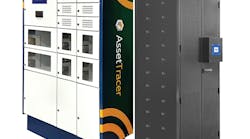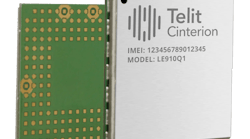Specialized virtual network operator Kore Telematics had a super assignment: providing bandwidth and network services to support the NFL's security team at Super Bowl XLII in Phoenix.
With video and a Kore-powered GPS vehicle tracking application from US Fleet Tracking, NFL security personnel were able to remotely monitor key locations such as team hotels and practice fields, and watch the movement of team buses as they take the New England Patriots and New York Giants to and from various facilities during the weekend.
"Often, the commotion surrounding events like the Super Bowl makes traditional oversight ineffective," Alex Brisbourne, president and chief operating officer of Kore, told eWEEK. "Wireless real-time M2M [machine-to-machine] applications provide authorities with peace of mind [from] knowing exactly where people are, or are going to be, at all times."
Kore's solution involves passive tagging and measuring through a network of machines that include video cameras, cell phones and laptops. The company maintains a network operations center that manages all aspects of its network as well as call management, connectivity control and Web-based SIM and device service management.
All of the video is wirelessly piped to the NFL security pavilion, where it is monitored over six large plasma screens.
For Kore it's the second season of partnering with US Fleet Tracking to ensure that players, team personnel, media representatives and VIPs are in the right places at the right times. Or at least to track where they are when schedules begin to fray.
"Basically, we have a small box on the buses," Brisbourne said. "The video is wirelessly transmitted back to the command center. It's updated every 10 seconds at the command center."
The Super Bowl requires top data-handling technology. Read more here.
As North America's largest independent provider of digital wireless services for the M2M, telematics and telemetry markets, Kore said it is driving adoption of machine-based communications in the public sector, retail, supply chain, security and utility industries.
"With an increasingly ubiquitous and cost-effective wireless network that allows machines to talk to machines, tracking and security applications are becoming more and more pervasive," Brisbourne said.
Kore expanded its service portfolio in 2007 to include CDMA (Code Division Multiple Access) 2.5G and third-generation network services, giving more choice of industry-standard IP service offerings for M2M adopters. Kore combines those tools with North American GSM/GPRS and CDMA/1xRTT and EvDO (Evolution Data Optimized) carrier partners.
According to Brisbourne, Kore's voice service offerings for the M2M market make it easier for ASPs (application service providers) to embed and manage voice technology in their M2M applications.
The upgrade and partnerships -- Kore is leasing spectrum from AT&T this week -- came in handy for this year's Super Bowl.
"We added some features from last year," Brisbourne said. "Last year, [Super Bowl officials] wanted to be able to better communicate by voice. Today, we open up Skype-like features for the network."
Despite his connections to the big game, Brisbourne wasn't in Phoenix for the game.
"I'm from the UK," Brisbourne said, expressing a taste for rugby.


